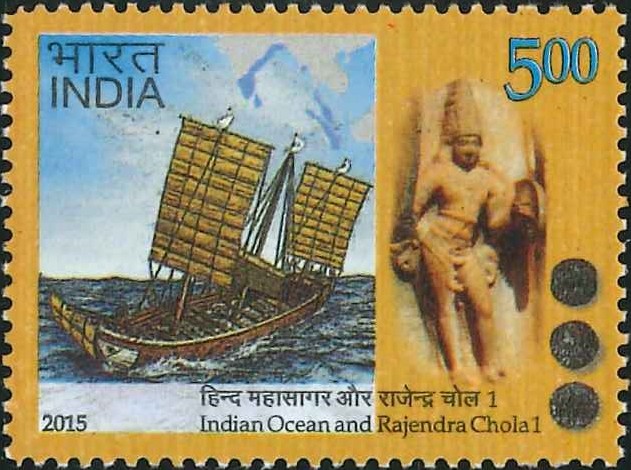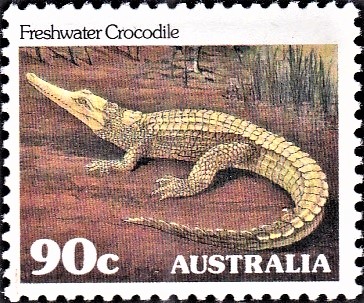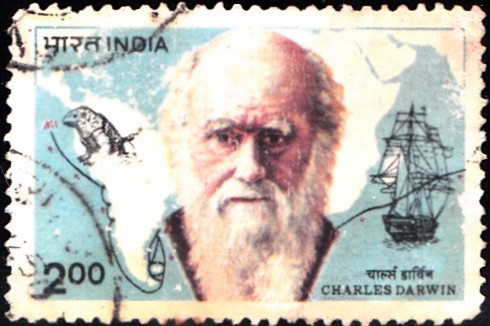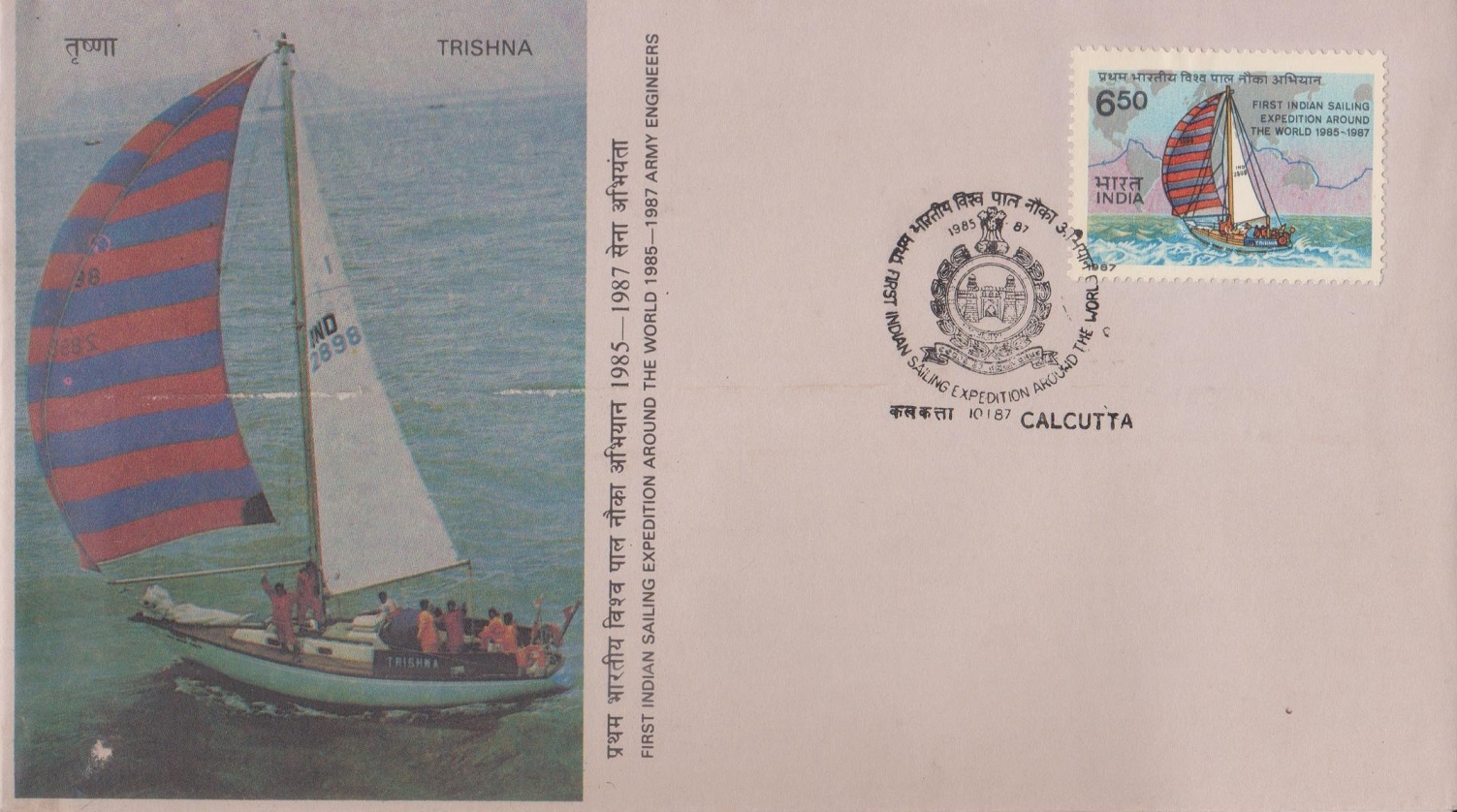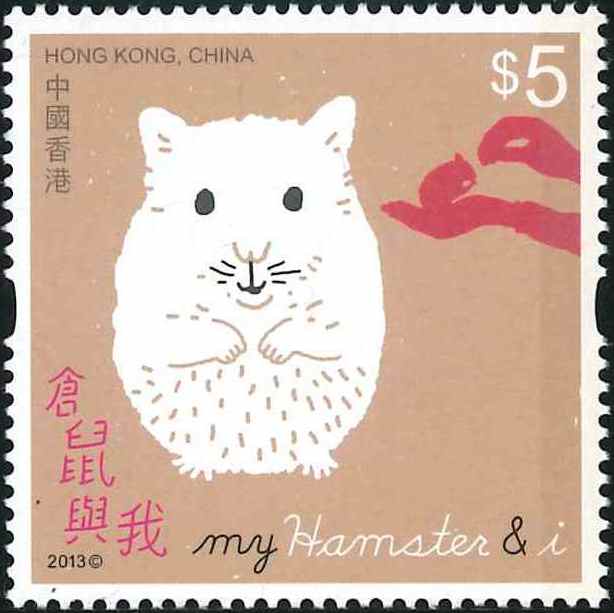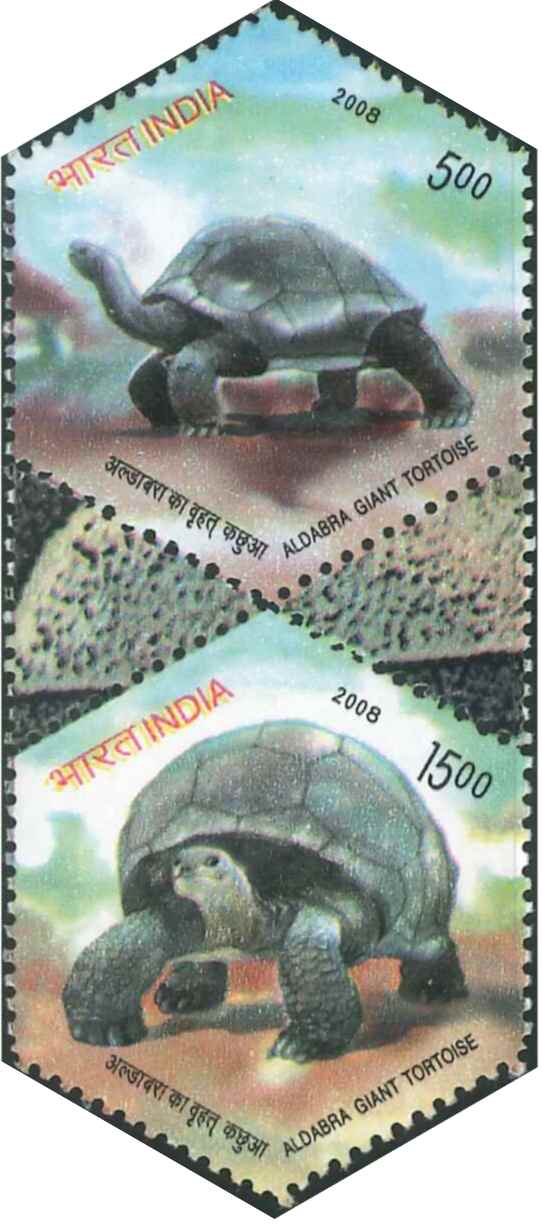
India on Aldabra Giant Tortoise
Complete Set of 2 nos of postage stamps on Adwaita, the Aldabra Giant Tortoise from Alipore Zoo, Kolkata :

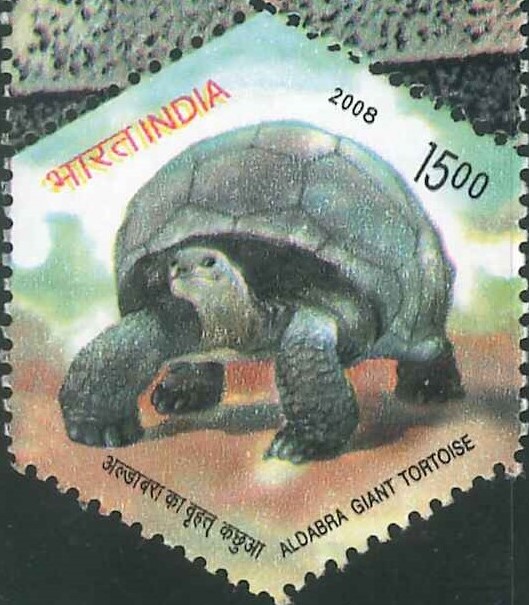
 Issued by India
Issued by India
Issued on Aug 2, 2008
Issued for : Department of Posts is proud to issue a set of two commemorative postage stamps on Aldabra Giant Tortoise.
Designs : The specially designed stamps are unique in the sense that they are hexagonal i.e. they have six sides. Perforation has been arranged in such a manner that in the sheetlet as well as in the miniature sheet some star shaped stamps can be taken out, dedicated to the star of the Alipore Zoo.
Credits :
Stamp & FDC : Suresh Kumar
Cancellation : Alka Sharma
Type : Se–tenant pair of 2 Stamps, Mint Condition
Colour : Multi colour
Denomination : 500 & 1500 Paise
Stamps Printed : 3 Million, 3 Million
Miniature Sheets : 0.2 Million
Printing Process : Photogravure
Printer : India Security Press, Nasik
About :
- This is the story of a tortoise named Adwaita. We all know about the legendary tortoise of folk tales who defeated the hare and won the race. Well, Adwaitya was also a winner. Before he died in the year 2006 in Alipore Zoological Garden, Kolkata, he was perhaps the longest living animal in the world having lived for more than 250 years.
- There is no one old enough to tell us exactly how his early life progressed. It is said that British sailors coming to India picked up tortoises from the Aldabra Island in the Indian Ocean, on the way to India. Legend has it that these were presented to Robert Clive who was instrumental in firmly establishing the rule of the British East India Company in India especially after the battle of Plassey (1757). Four such tortoises are brought to the Alipore Zoo at the time of its establishment in 1857 from the menagerie at Latbagan, Barrackpore established by Wellesley in 1800. Three of them eventually died in the last 130 years at different times. To save Adwaitya, the last surviving specimen from being teased by unruly visitors, he was kept in a secluded enclosure. Subsequently, on 30th November, 1994 he was shifted to a centrally located octagonal enclosure so that visitors could see this living wonder from a safe distance without disturbing him.
- People lovingly called him Adwaitya meaning the matchless or the unique (Hindi: Adviteeya i.e. unique or no second) as he was a living example of nature’s mysteries. He is supposed to have been born in 1750, however, some say it was 1705. He fed on wheat bran, grams soaked in water, small pieces of carrot, sweet potatoes, beans, leafy vegetables, diced banana and rice mixed with powder gram. The Aldabra Giant Tortoise (Geochelone gigantea) is a native of Aldabra atoll, part of the Seychelles Islands in the Indian Ocean. The Aldabra atoll has been protected from human influence since late 19th century and is home to a large number of giant tortoises, perhaps having the world’s largest population of the animal. The size of an Aldabra Giant Tortoise can be upto 4 ft. in length and the weight can be about 550 lbs. They are normally dark grey to black in colour, have small pointed head covered with scales, a long neck, a highly domed carapace and thick, bony scales on forelegs. Aldabra Giant Tortoise differs from the other Giant Tortoises found in Galapagos Island in Pacific Ocean by having a small neck plate on the carapace which seems to be absent in the Galapagos Giant Tortoise. The Aldabra Giant Tortoise is mainly terrestrial and leads a solitary life except when food and water are scarce, when it gathers to feed. Breeding season extends from February to May. The female usually lays 4 to 25 eggs and incubation is about 4 months.
- Giant Tortoises have been subject of scientific research for conservation and breeding. It is said that they can survive upto six months without food and water. Indiscriminate hunting has threatened the survival of Giant Tortoises in Galapagos as well as in the Indian Ocean Islands.
- Adwaitya already had eighty years behind him by the time Charles Darwin arrived at Galapagos and forever changed the way we look at our evolution. India’s first war of independence in 1857, partition of Bengal in 1905, the two World Wars, strides in the field of science and technology, the theory of relativity, conquest of the space, the moon, the Everest, the making of and later breaking of the wall of Berlin….. events passed on the world stages but, unconcerned and unaffected, Adwaitya, the matchless kept growing and gathering layers of time, more like an unmindful rock sitting by the riverside. How many generations of zoo visitors must have looked at Adwaitya with amazement and marvelled at his longevity!
- Adwaitya became ill several months before his death after a crack developed around a wound on his chest, and ultimately succumbed on 22nd March, 2006.
- Adwaitya could have been an interesting study on how he coped with such a prolonged human captivity. Did he resent it? Did he pine for his native Aldabra? Or, did he ultimately get tired and went with the unfulfilled dream of one day seeing his homeland? No answers expected in a lifetime.
- Text : Based on material provided by the proponent.


